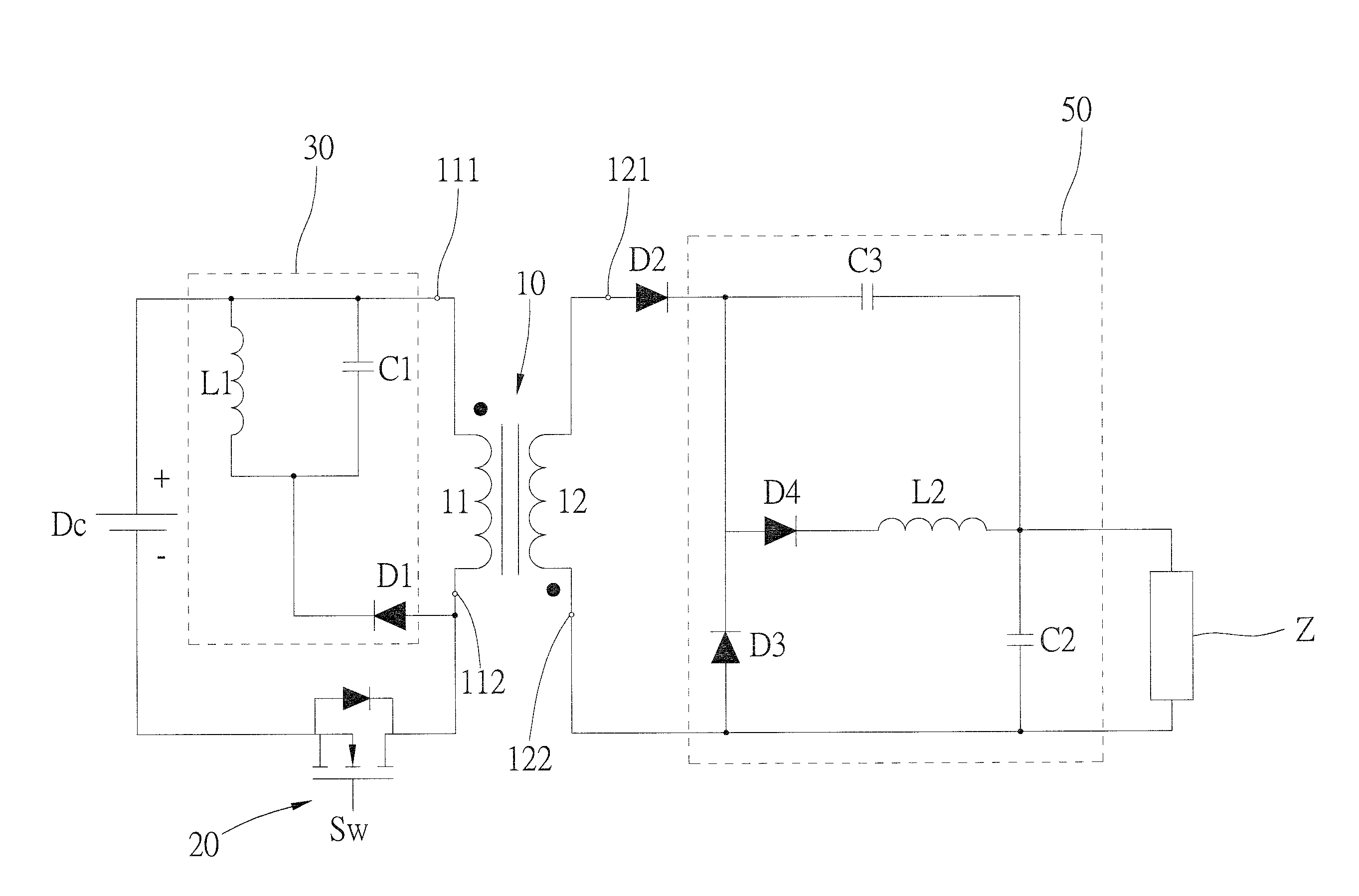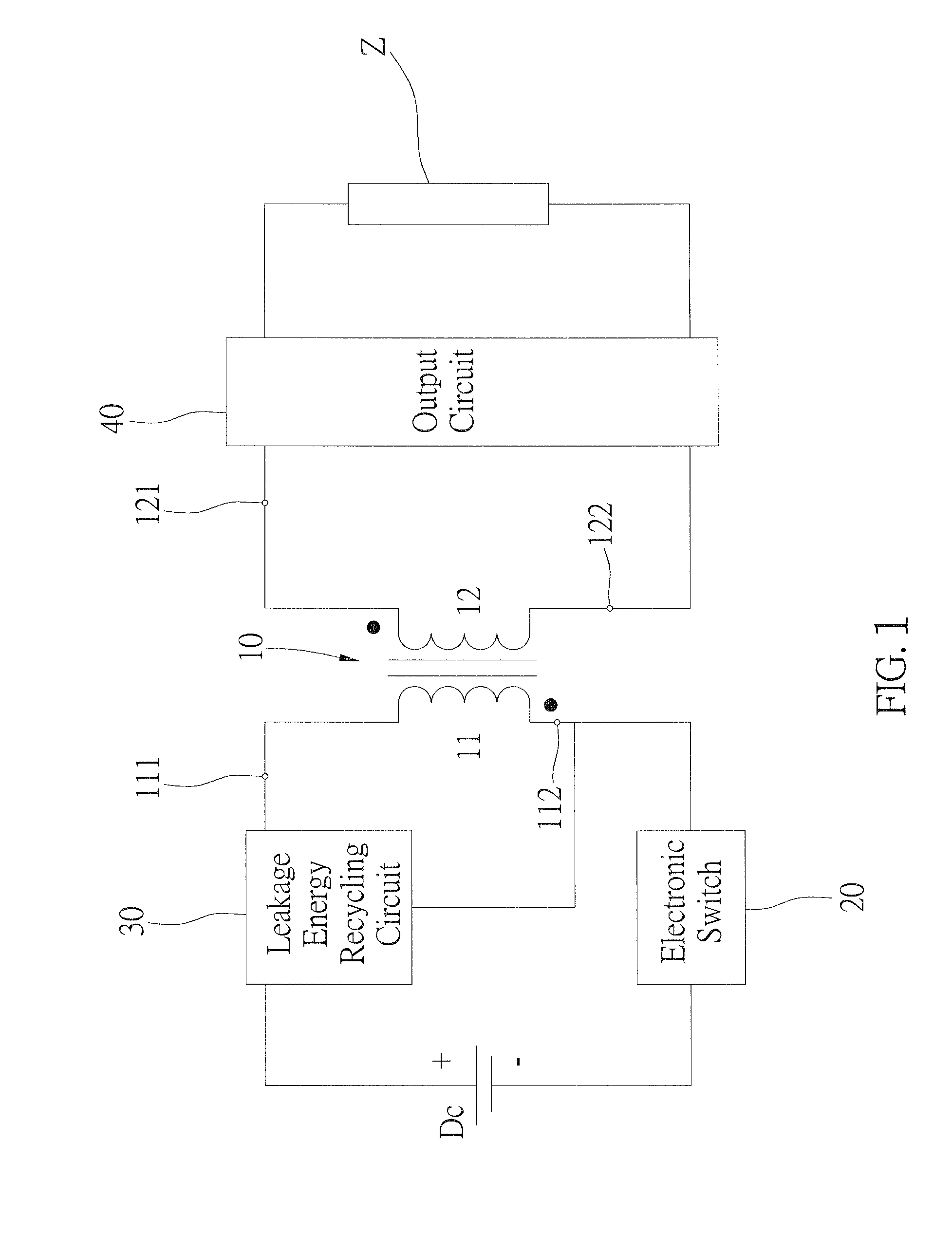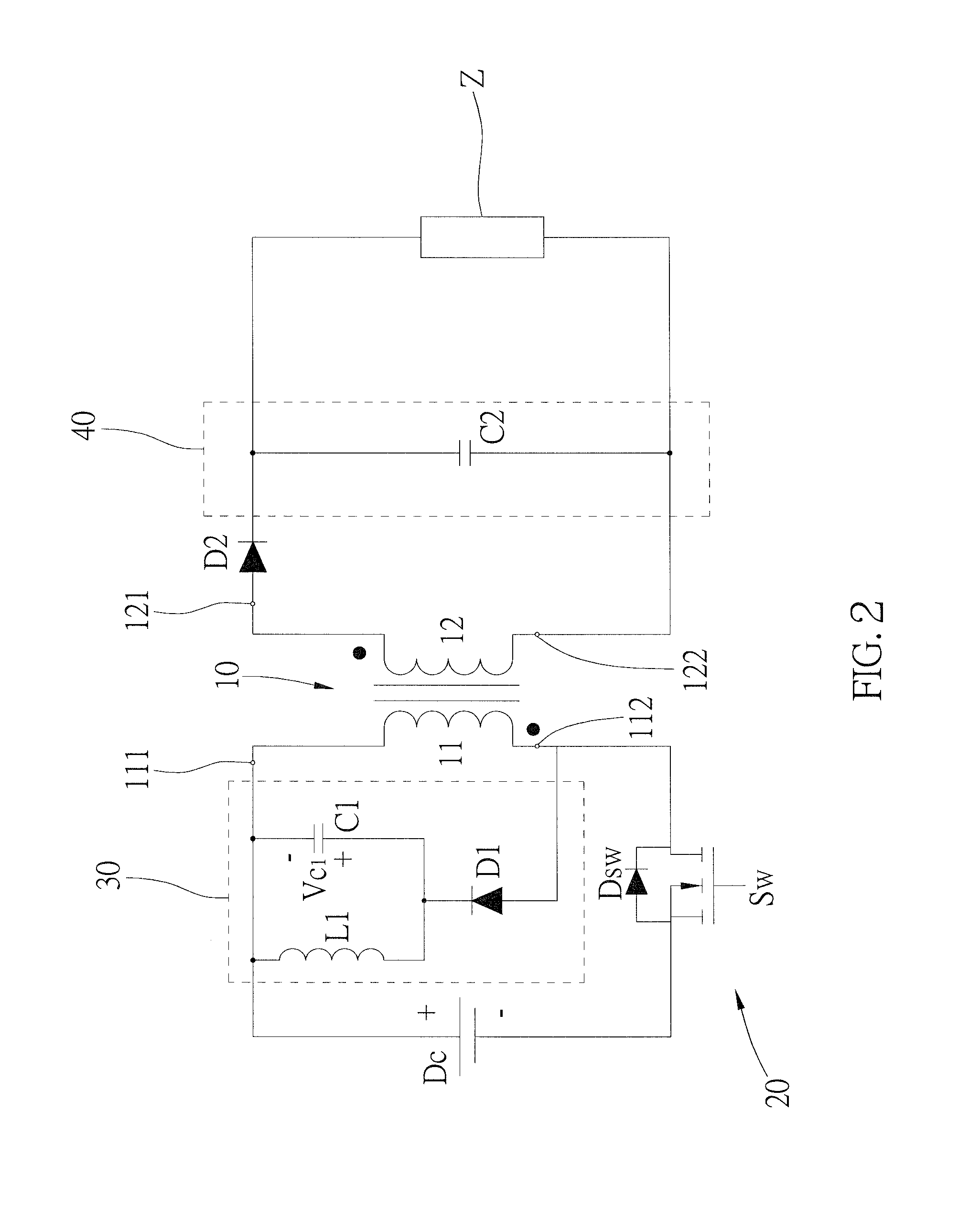Power conversion apparatus
a power conversion apparatus and power conversion technology, applied in the direction of electric variable regulation, process and machine control, instruments, etc., can solve the problems of generating more leakage energy, reducing the coupling coefficient of the transformer, and affecting the efficiency of power conversion, so as to improve the power conversion efficiency
- Summary
- Abstract
- Description
- Claims
- Application Information
AI Technical Summary
Benefits of technology
Problems solved by technology
Method used
Image
Examples
Embodiment Construction
[0017]As shown in FIG. 1, a power conversion apparatus of the first preferred embodiment of the present invention is able to convert power of a direct current (DC) power supply Dc, and provide the converted power to a loading Z. The power conversion apparatus includes a transformer 10, an electronic switch 20, a leakage energy recycling circuit 30, and an output circuit 40.
[0018]The transformer 10 has a primary winding 11 and a secondary winding 12, wherein the primary winding 10 receives the power of the DC power supply Dc, and the secondary winding 12 outputs the converted power. In more details, as shown in FIG. 2, the primary winding 11 has a first end 111 and a second end 112, and the secondary winding 12 has a third end 121 and a fourth end 122, wherein the first end 111 of the primary winding 11 is electrically connected to a positive terminal of the DC power supply Dc. In the preferred embodiment, the transformer 10 is a flyback transformer, and the primary winding 11 and th...
PUM
 Login to View More
Login to View More Abstract
Description
Claims
Application Information
 Login to View More
Login to View More - R&D
- Intellectual Property
- Life Sciences
- Materials
- Tech Scout
- Unparalleled Data Quality
- Higher Quality Content
- 60% Fewer Hallucinations
Browse by: Latest US Patents, China's latest patents, Technical Efficacy Thesaurus, Application Domain, Technology Topic, Popular Technical Reports.
© 2025 PatSnap. All rights reserved.Legal|Privacy policy|Modern Slavery Act Transparency Statement|Sitemap|About US| Contact US: help@patsnap.com



